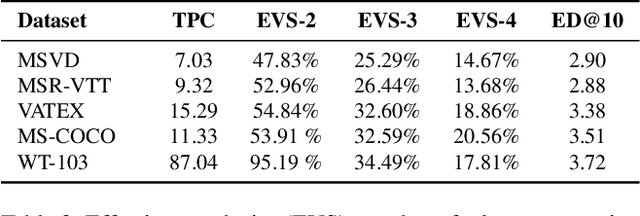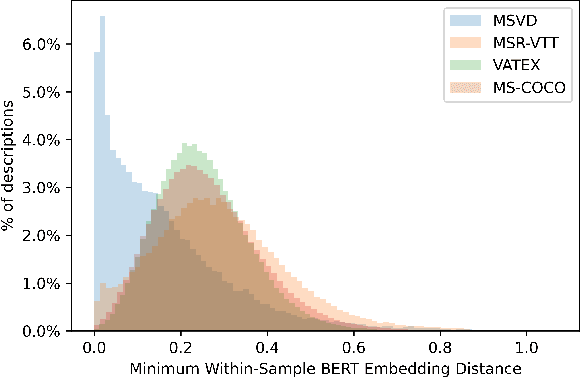What's in a Caption? Dataset-Specific Linguistic Diversity and Its Effect on Visual Description Models and Metrics
Paper and Code
May 12, 2022



While there have been significant gains in the field of automated video description, the generalization performance of automated description models to novel domains remains a major barrier to using these systems in the real world. Most visual description methods are known to capture and exploit patterns in the training data leading to evaluation metric increases, but what are those patterns? In this work, we examine several popular visual description datasets, and capture, analyze, and understand the dataset-specific linguistic patterns that models exploit but do not generalize to new domains. At the token level, sample level, and dataset level, we find that caption diversity is a major driving factor behind the generation of generic and uninformative captions. We further show that state-of-the-art models even outperform held-out ground truth captions on modern metrics, and that this effect is an artifact of linguistic diversity in datasets. Understanding this linguistic diversity is key to building strong captioning models, we recommend several methods and approaches for maintaining diversity in the collection of new data, and dealing with the consequences of limited diversity when using current models and metrics.
 Add to Chrome
Add to Chrome Add to Firefox
Add to Firefox Add to Edge
Add to Edge